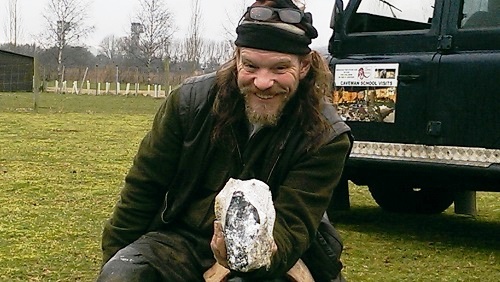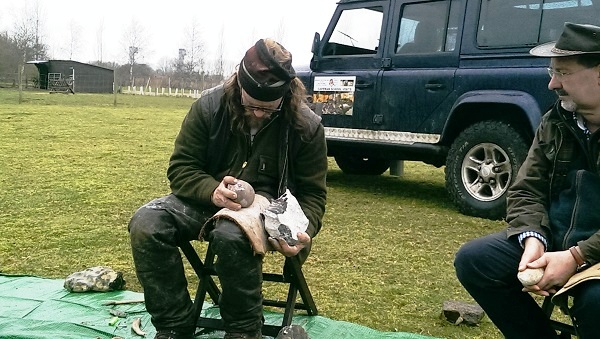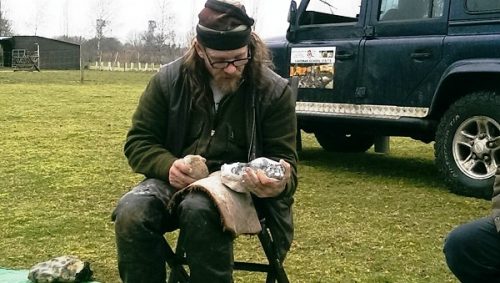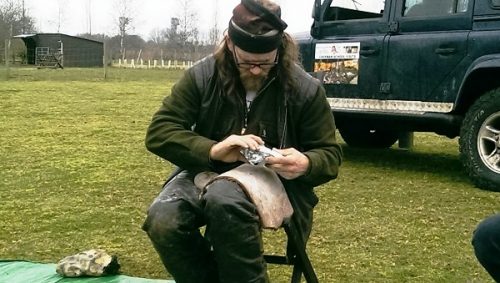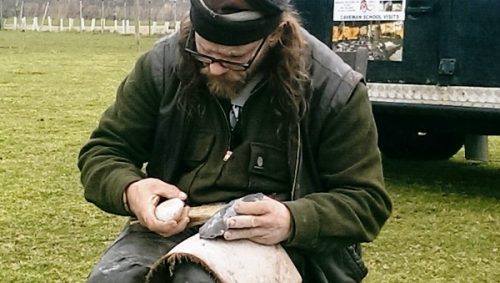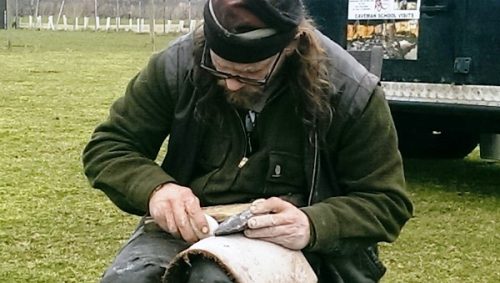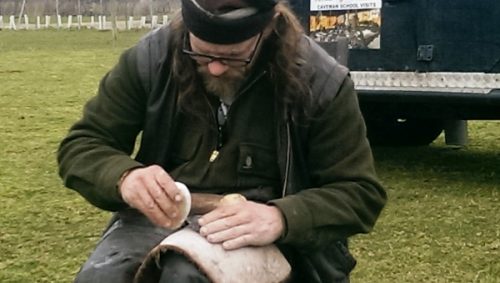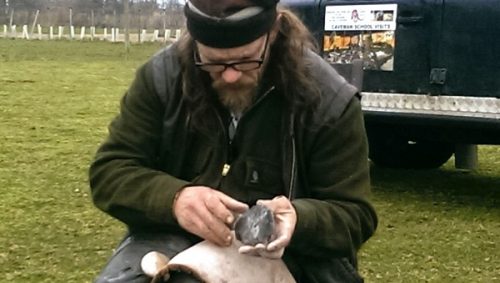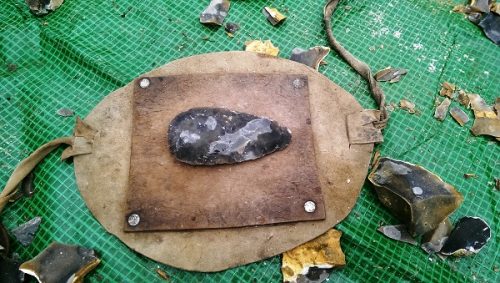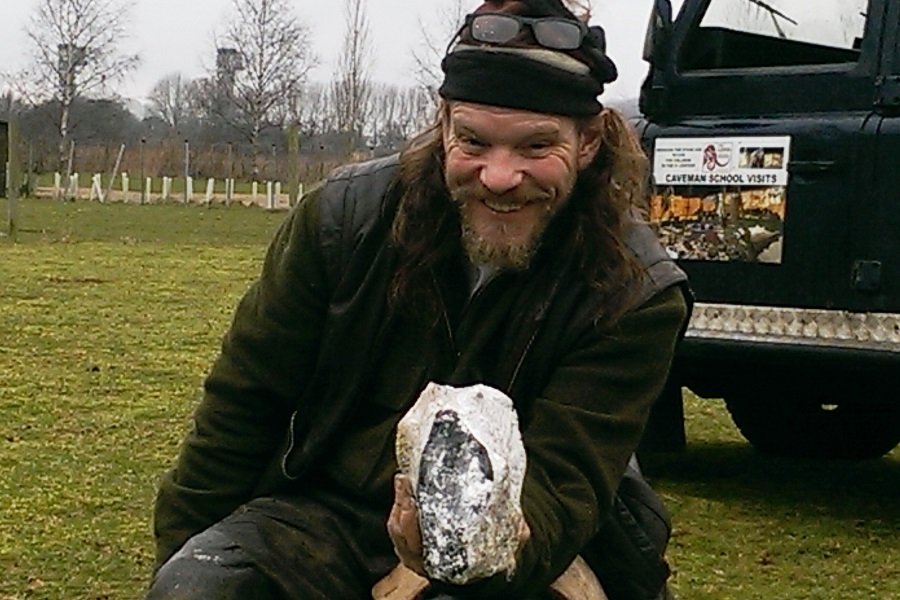A flint knapping workshop organised by Vivacity took place at Flag Fen on Saturday.
Eight students (including FRAG members) produced arrowheads, stone axes and a variety of sharp blades. However, it soon became clear that we should have started practicing many years before if we were ever to become as proficient as our forebears.
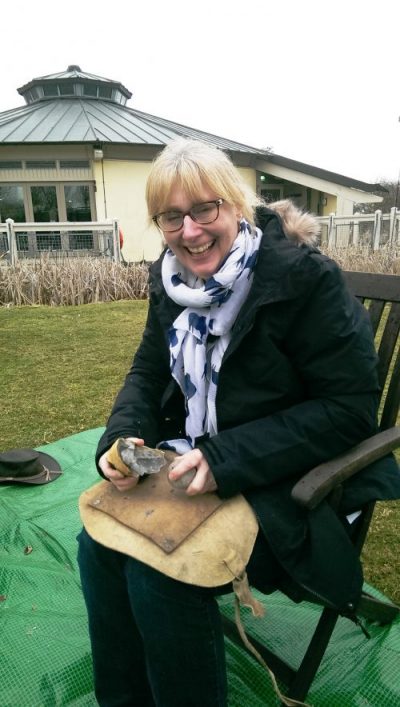
Min demonstrates hard-hammer percussion!
Our instructor for the day was Will Lord. Will grew up on the English Heritage site of Grimes Graves, a prehistoric flint mine in Norfolk. Experimenting with flint since he was a young boy, he must be one of the most expert flint knappers in the world. The day provided a real insight into how our Neolithic and earlier ancestors would have approached tool making. Hopefully it will also have helped us identify worked flint from natural stone.
Every piece of flint differs but it breaks in a very distinctive way – conchoidal fracture. This is a smoothly curving fracture of fine-grained materials which have no planes of separation. There are other rocks such as obsidian which behave like this but they are unusual. An expert eye can use this property to shape and strengthen objects for use as sharp edged tools.
A surprising aspect of working flint is speed. With the right experience and tools, sharp blades can be generated in seconds; basic axes can be produced in minutes. It is only the more refined arrowheads and axes which require much more time.
How to make a flint axe in 5 minutes:
